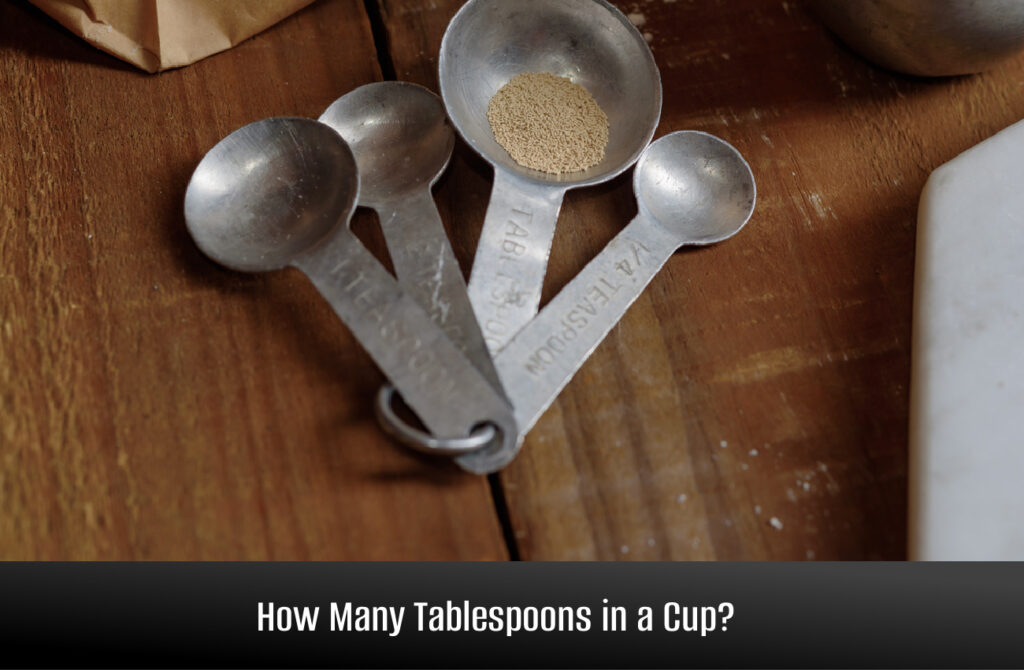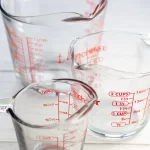Unveiling the Mysteries of Kitchen Measurement: Demystifying Cups and Tablespoons
Have you ever stared at a recipe brimming with delicious possibilities, only to be stumped by the measurements? Teaspoons, tablespoons, cups – oh my! Understanding unit conversions is essential for navigating the world of cooking and baking. This comprehensive guide dives into the fascinating realm of kitchen measurements, focusing on the conversion between cups and tablespoons, two fundamental units for home chefs.
Understanding the Units: Cups and Tablespoons
Our journey begins by establishing a clear understanding of the two key units we’ll be dealing with: cups and tablespoons.
- Cup (c): A unit of volume commonly used for measuring liquids and dry ingredients in the United States. There are two main types of cups to consider:
- US Customary Cup (cup): The standard cup used in recipes and household measurements in the United States. It holds 8 fluid ounces (fl oz) of liquid.
- Metric Cup (mL): Used in some countries and for specific recipes. A metric cup is equal to 250 milliliters (mL), which is slightly larger than a US customary cup.
Important Note: Throughout this article, we’ll focus on the US customary cup (8 fl oz) unless otherwise specified.
- Tablespoon (tbsp): A unit of volume commonly used for measuring smaller quantities of liquids and dry ingredients. There are two points to remember about tablespoons:
- Size: One tablespoon (tbsp) is equal to 1/16 of a US customary cup (8 fl oz).
- Type: While less common in recipes, there is also a dry tablespoon, which is slightly larger than a standard tablespoon due to the packing density of dry ingredients. However, for most culinary purposes, the distinction isn’t crucial.
The Conversion Formula: A Simple Key to Unlocking Culinary Confidence
Now that we’ve identified our culinary companions, let’s unveil the formula for converting between cups and tablespoons. The beauty lies in its simplicity:
Number of Tablespoons (tbsp) = Number of Cups (c) * 16 tbsp/cup
This formula essentially multiplies the number of cups by 16, which reflects the number of tablespoons in a US customary cup (1 cup = 8 fl oz / 1/16 fl oz/tbsp = 16 tbsp).
Conversion Formula (alternative):
Number of Cups (c) = Number of Tablespoons (tbsp) / 16 tbsp/cup
This formula divides the number of tablespoons by 16 to find the equivalent number of cups.
Conversion Examples: Putting the Formula into Action
Let’s solidify our understanding with some practical recipe examples:
-
Converting Cups to Tablespoons:
- A recipe calls for 1/2 cup of milk. How many tablespoons of milk do you need?
- Apply the formula: Number of Tablespoons (tbsp) = 1/2 cup * 16 tbsp/cup = 8 tbsp
- Therefore, you need 8 tablespoons of milk.
- A recipe calls for 1/2 cup of milk. How many tablespoons of milk do you need?
-
Converting Tablespoons to Cups:
- You have a recipe that requires 30 tablespoons of sugar. How many cups of sugar is that?
- Apply the formula: Number of Cups (c) = 30 tbsp / 16 tbsp/cup = 1.875 cups (rounded to 3 decimal places for accuracy)
- In most cases, you can round to 1.88 cups for practical purposes.
- You have a recipe that requires 30 tablespoons of sugar. How many cups of sugar is that?
Important Note: Rounding is generally acceptable in the kitchen, especially when dealing with recipe quantities. Depending on the ingredient, rounding to the nearest quarter cup, tablespoon, or even teaspoon might be appropriate.
Beyond the Basics: Additional Considerations
While the core conversion formula is straightforward, a few additional points deserve mention:
-
Accuracy: For baking, where precision can be more crucial, using measuring cups with clear markings and proper measuring techniques (leveling dry ingredients with a straight edge) can improve accuracy.
-
Density: The conversion assumes we’re dealing with ingredients that have a similar density to water. For very dense or light ingredients, slight variations might occur. In such cases, using a kitchen scale for weighed measurements might be preferable.
-
International Considerations: The US customary cup (8 fl oz) is the standard in the United States. If following recipes from other countries, you might encounter metric cup measurements (250 mL). Double-check the cup size used in the recipe to ensure accurate conversions.
Applications of Converting Between Cups and Tablespoons
Understanding the relationship between cups and tablespoons is essential in various culinary scenarios:
- Following Recipes: Most recipes list ingredients in cups.
-
Substituting Ingredients: If a recipe calls for an ingredient you don’t have, but you have a similar substitute, knowing the conversion between cups and tablespoons allows you to measure out the appropriate amount of the substitute.
-
Halving or Doubling Recipes: Want to make a recipe for a smaller or larger crowd? Understanding cup and tablespoon conversions allows you to adjust ingredient quantities proportionally.
-
Creating Your Own Recipes: Experimenting and developing your own culinary creations requires measuring ingredients accurately. Converting between cups and tablespoons empowers you to create delicious dishes with confidence.
Beyond Conversion: Tips for Mastering Kitchen Measurement
-
Invest in a good quality measuring cup set: A set with clear markings in cups, ounces, tablespoons, and teaspoons will significantly improve your measurement accuracy.
-
Utilize measuring spoons: While some recipes might use tablespoons for both liquids and dry ingredients, having a set of measuring spoons ensures precise measurement for smaller quantities, especially for spices.
-
Leveling dry ingredients: For dry ingredients like flour, sugar, or baking powder, use a straight edge to level off the top of the measuring cup after scooping it. This prevents using too much ingredient, which can affect the outcome of your recipe.
-
Consider using a kitchen scale: For greater accuracy, especially in baking, a kitchen scale allows you to weigh ingredients in grams. While this might require additional conversion steps from the recipe’s listed cup or tablespoon measurements, it can lead to more consistent results.
By understanding the relationship between cups and tablespoons, coupled with the valuable tips provided, you’ve unlocked a fundamental skill for navigating the kitchen with confidence. So, the next time you encounter a recipe with unfamiliar measurements, you’ll be equipped to convert, measure, and create culinary masterpieces!
Frequently Asked Questions (FAQ) About Cups and Tablespoons
1. How many teaspoons are in a tablespoon?
There are 3 teaspoons (tsp) in one tablespoon (tbsp).
2. How many ounces are in a cup?
There are 8 fluid ounces (fl oz) in a US customary cup (cup).
3. What if I don’t have measuring cups or spoons?
In a pinch, you can improvise using readily available household items. Here’s a quick conversion guide:
- 1 cup = 16 tablespoons (tbsp)
- 1 tablespoon (tbsp) = 3 teaspoons (tsp)
- 1 cup = approximately 8 fluid ounces (fl oz)
- 1 tablespoon (tbsp) = approximately 1/2 a fluid ounce (fl oz)
4. Is there a difference between a tablespoon for liquids and dry ingredients?
There is a slight difference in volume between a tablespoon of a liquid and a dry ingredient due to packing density. However, for most culinary purposes, the distinction isn’t crucial.
5. How can I ensure accurate measurements when baking?
- Use the appropriate measuring cups and spoons for the units specified in the recipe (cups, tablespoons, teaspoons).
- Level off dry ingredients with a straight edge.
- For liquids, measure at eye level to avoid under- or overfilling the measuring spoon.
- Consider using a kitchen scale for weighed measurements, especially for critical ingredients in baking.
By understanding the relationship between cups and tablespoons, employing these conversion tips, and practicing good measuring techniques, you’ll be well on your way to mastering kitchen measurement and achieving baking success!



